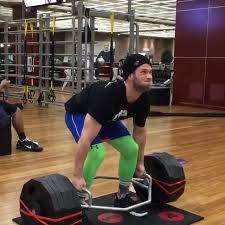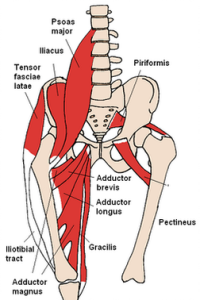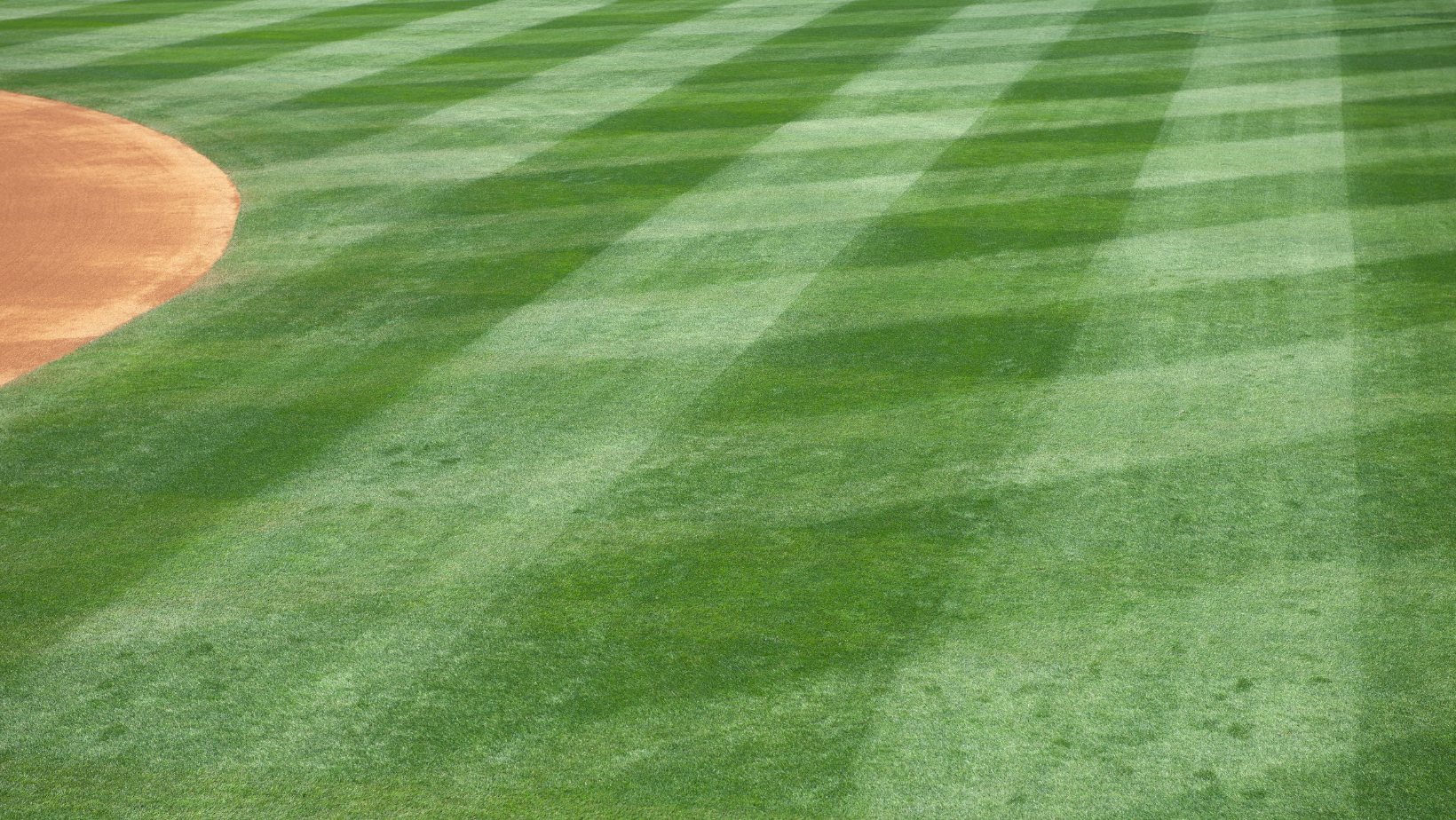March 27, 2018
Erick Mojica – B.S Kinesiology
Deadlifts are in my top 3 exercises for any client for a variety of reasons. It is applicable to everyday life activities such as bending down and picking up somet

hing off of the ground. Having to pick up dead weight (hints the name) challenges the entire body forcing the legs, core, back, arms, and most importantly the brain to sync together to perform a movement.
For athletes it develops a great deal of strength and for the general gym person it helps enforce good movement patterns… if applied and trained correctly.
A deadlift requires a lot of technique practice and postural development because there are a variety of movements that can put the spine in a vulnerable position.
With my history of back issues, the deadlift has been my biggest challenge in my training life. It took me a full year in college strength and conditioning to learn how to perform the movement and once I got it down I was able to make great jumps in the loads in which I performed the exercise. A few weeks after reaching a PR of 315 lbs., I injured a disk in my lumbar spine performing a kettle bell swing.
Over the course of my junior season of college baseball, the wear and tear of weightlifting and playing the sport resulted in a herniated disk. Through the ups and downs of my rehab, my body reached a tremendous drop off of strength, especially with leg exercises… what I was good at 🙂
In the last year or so after graduating and retiring from baseball I have been able to put a lot of focus onto strengthening and rehab training to get back to what I considered to be my normal strength and health.
On New Year’s Day I hopped into the New Year train and decided to deadlift… only to re-injure my lower back again. My back locked up and felt like I was back to square one with my training
But this isn’t a sad story, but rather a learning one.
Working at Genesis Health Clubs in Overland Park, KS got me to be surrounded by some awesome trainers who hold specialties in Corrective Exercise and Physical Therapy backgrounds who have shared an amazing amount of knowledge to help me out with my physical limitations.
I have talked about in previous articles about muscle imbalances and implementing a variety of techniques to improve movement quality and reduce pain. Well when it comes to lower back pain, there are what seems to be infinite amount of ways to find an issue that is causing the pain and discomfort. Nevertheless is a quick summary of all the things that I have discovered and implemented into my training programs to help the cause.
The lumbar spine is connected to the pelvis area and can get receive a great deal of

unwanted forces onto the vertebral discs and connective tissue. There are a lot of muscles that connect this lumbo-pelvic hip complex and finding underactive/overactive muscles is a big first step. Assessments do not describe structural issues but they can provide a great deal of information that allows us to paint a picture about what could be going on.
When it comes to movement of the spine, it can move solely or in combination of 4 different ways: Flexion, Extension, Lateral, and Rotational.

If someone ever tells you that these positions are not natural to be in when performing an exercise they are FLAT OUT WRONG!!!
The human spine is biologically designed to move in these manners, but where we can get caught up with posture and technique with resistance training is looking past the biomechanics of the body.
Biomechanics is defined as the study of the mechanical laws relating to the movement or structure of living organisms. This means that within every movement there are measurable forces that inevitably take place onto all of the body’s tissues involved.
When we talk about technique with exercise, there is a misunderstanding between what is “right from wrong.” Wrong technique is regarded towards what is physically dangerous to the body’s joint structure as well as the muscles that connect. When it comes to making such judgements, conclusions should be based off of scientific and evidence based reasoning.
Unfortunately for the fitness culture, it takes a great deal of expertise to understand the physics that go behind resistance exercise. This isn’t to take a shot to the typical advice giver out on the gym floor, but it is a very risky thing to give people technique advice if you don’t have a good understanding on what you are making someone do physically… especially with weight.
With that said, I think the greatest fitness professionals are the ones who are willing to say “I don’t know, let’s find out,” –Dr. Mark Slavin.
Dr. Mark Slavin is a Biomechanics expert who has a lifetime of experience in the field of resistance training education. I attended a 2 day seminar along with many Genesis trainers and was given tremendous amount of insight on how to look at movement.
I’ll lay out what is a given to every fitness professional… movement occurs when muscles pull onto a joint structure. But what takes movement in depth is understanding the anatomy and physics that take place when using a resistance force.
In regards to a Deadlift, the movement begins with hip flexion. As the lifter begins to pull the bar up, he/she pushes a force into the ground and has a kinetic energy transfer that moves all the way up the kinetic chain getting into extension. This energy transfer is what allows the gripping of the bar to pull the resisted force against gravity and move it upward.

The major anatomical region that has to transfer that energy is the spine, which is connected practically every limb of the body. If the spine in any region is not in a neutral position (flat back), those forces immediately transfer over to what breaks that kinetic chain.
Because the hips go from flexion to extension, the movement is dominated by the rotation of the pelvis (connected to the lumbar spine). With the slightest flaw in movement sequence, the weight of the bar being pulled from the ground can create a detrimental amount of shear forces onto the spine.
While it may appear that most people can get away with bad technique, the movement is providing constant damage onto the connective tissues of the spine. What could begin to bring an alarm is tightened muscles, but that is only a small portion of what is really happening. The reality is that we cannot physically see what is happening to the connective tissues, but we can predict a lot by paying attention to what direction forces are being applied to these anatomical vulnerable positions.
Here’s a video breaking down a common set-up flaw that can put someone in a risky position when performing a Deadlift.
Getting back to my lower back flaws, my biggest issue with Deadlifting has been that the muscles that are supposed to support my spine are either weak, underactive, and/or possibly dormant. These descriptions sound pretty similar, but it takes understanding what movement these muscles are responsible for to make an educated guess on what needs to be fixed.
Notice how I said guess? Well that is because we cannot physically see what the muscles and connective tissues are physically experiencing. EMG pads can give us more information, but to the naked eye we just don’t know. With that said, Dr. Slavin had my mind click on the thought that to improve a complex movement like a deadlift we have to start by working on the individual parts.
I’ve been aware that lumbar extension has been painful and flexion feels really unstable. Well the biggest piece missing in my rehab has been primarily focusing on the muscular function and not using them in all the planes of motion.
To explain, I knew that I needed to strengthen my core as well as my glutes and hamstrings. I asked him then “why is it that I can Hip Thrust 405 lbs. and barely lift up dead weight at 135?” Well it goes back to the Biomechanics of the movement.
What muscles initiate the pull? What muscles are responsible for supporting the spine? If the spine is unstable, what direction have you been training those muscles to strengthen?
Well the majority of my core strengthening has been Isometric, meaning that I limit all of the planes of motion when performing an exercise. My rehab had minimal spinal loads in flexion, extension, side bending, and rotation!!! Within 2 days of doing this I immediately began to feel less tension in my lower spine… from any standing or seated position.
Now this does not mean that performing these exercises will be an overnight fix, but it helped. On the 3rd day I was able to Deadlift 135 lbs. without any pain or discomfort. This was the case for me and it will certainly take several weeks to a few months to make this a long term fix.
But to me this speaks a lot about what Biomechanics can do for a person struggling to perform an exercise. The inability to lift weight on a deadlift isn’t always a result of a lack of strength, sometimes that the muscles aren’t firing properly.
The human body is a machine and we have to think of it as such. It is designed to move in a variety of ways but when we add a resisted force against it, the brain will always look for the easiest way to accomplish the task. We compensate during movements because our brain senses the stressor as something “harmful.” If work on the individual parts, the mind-muscle connection improves thus allowing a cleaner and more efficient movement pattern when performing a complex movement.
So if you struggle with a specific exercise such as a deadlift, I encourage you to consider all of these factors. There is no simple fix and every individual will have their own needs as far as improving a movement. If you need help on how to approach your needs, asking a fitness professional can open your mind on how to make some changes to your training regimen.
For more information on baseball and training concepts check out the content posted on this blog as well as my social media accounts. Check it out on Instagram and Facebook!!!


Leave a comment